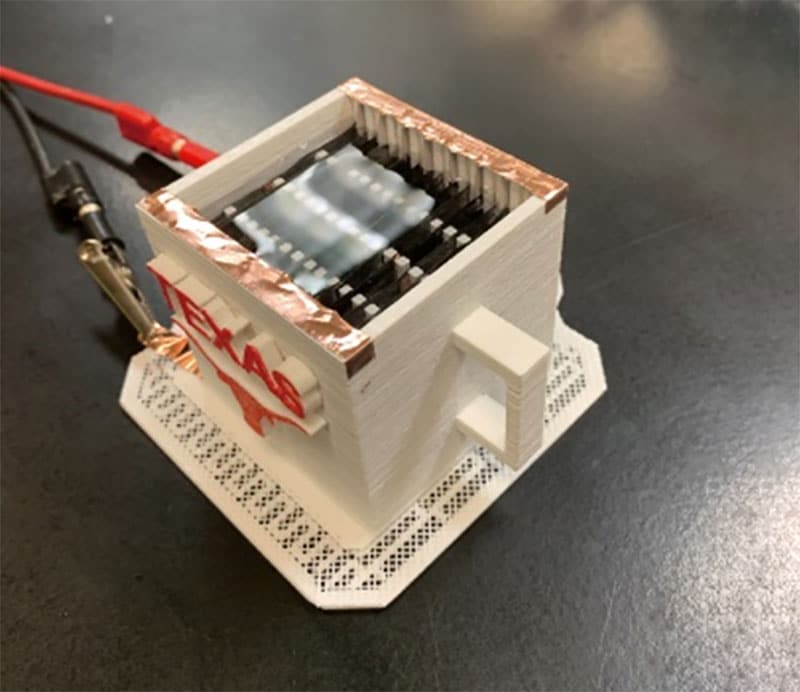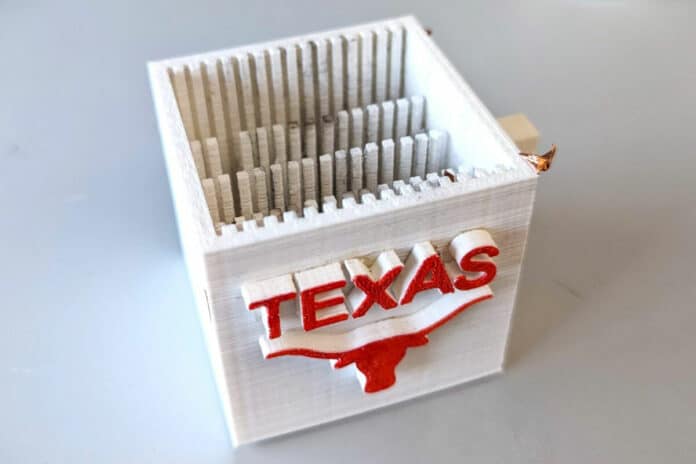Billions of people around the world are continuing to suffer from poor access to water, sanitation, and hygiene. Clean, accessible water is critical to public health, whether it is used for drinking, domestic use, food production, or recreational purposes.
However, developing energy-efficient, easy-to-use, and portable water treatment systems for point-of-use (POU) applications remains challenging. This is especially important for ensuring the safety and resilience of society during extreme weather and other critical situations.
Now, researchers at the University of Texas at Austin have developed a mug-sized device that can quickly clean water using a small jolt of electricity to fish out bacterial cells.
The water-purifying cup has a branched electrode based on a root system in a tree with branches traveling in several directions. The electrode creates an electric field that the E. coli cells are attracted to. They willingly swim out of the water into the electrode branches. The electrode is encased in a graphite-based foam that captures the bacteria after the electrode fishes it out of the water.
“We are able to clean water using very little energy because we steer the bacterial cells with electric fields, and most bacterial cells are natural swimmers who propel themselves to electrodes and got captured alive,” said lead researcher D. Emma Fan, an associate professor in the Department of Mechanical Engineering at the University of Texas at Austin.

In lab studies, a prototype integrated into a 3D-printed portable water-purification module was able to remove 99.997% of E. coli bacteria from water in approximately 20 minutes. The water samples taken from Waller Creek in Austin were small – 2- to 3-ounce – but researchers believe that the device is scalable and has the capacity to do more.
The foam-encased electrode, costing $1.47 per piece, can robustly operate at least 20 times for more than 8 hours in total without functional degradation. It’s also simple to use: dip the electrode-filled cup into the water, give it an electrical jolt, and let the electrodes fish out bacteria. Then, wait and remove the water for drinking.
The researchers next want to streamline the design of the water-purifying cup and are looking into ways to commercialize it. In addition, the use of electrical power allows integration with batteries for stored energy and can be easily used at home, in the office, or in a car. The energy cost is also much less than those of various emerging technologies.
Researchers estimate that Texas’ population would double by 2050, and the need for research to address resilience after Harvey motivated Fan to focus her work on natural disasters.
“When our water infrastructure is down – no water, no gas, and no electricity – we need point-of-use devices for cleaning water we can get out of ponds, streams, or rivers,” Fan said in the press release. “We believe our device can someday fill that need.”
Journal reference:
- Xianfu Luo, Weigu Li, Zexi Liang, Yifei Liu, and Donglei Emma Fan. Portable Bulk-Water Disinfection by Live Capture of Bacteria with Divergently Branched Porous Graphite in Electric Fields. ACS Nano, 2023; DOI: 10.1021/acsnano.2c12229
